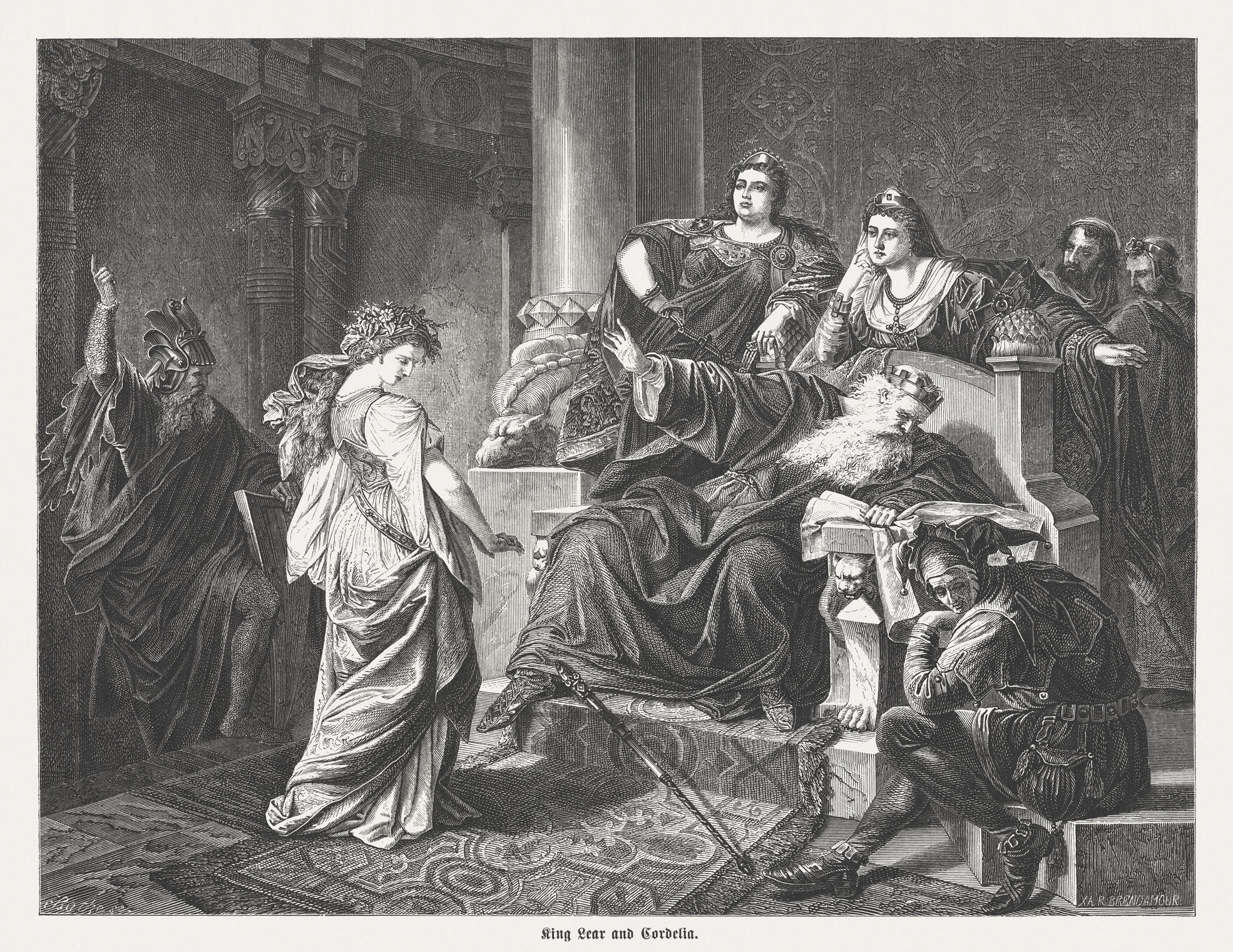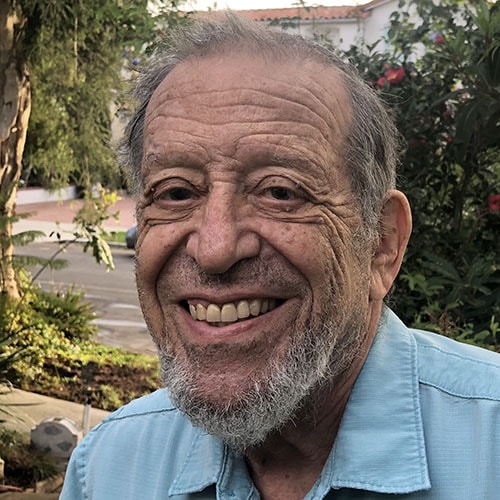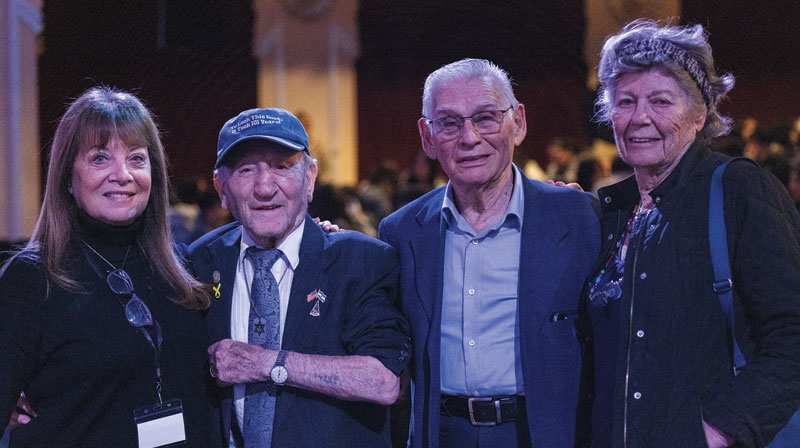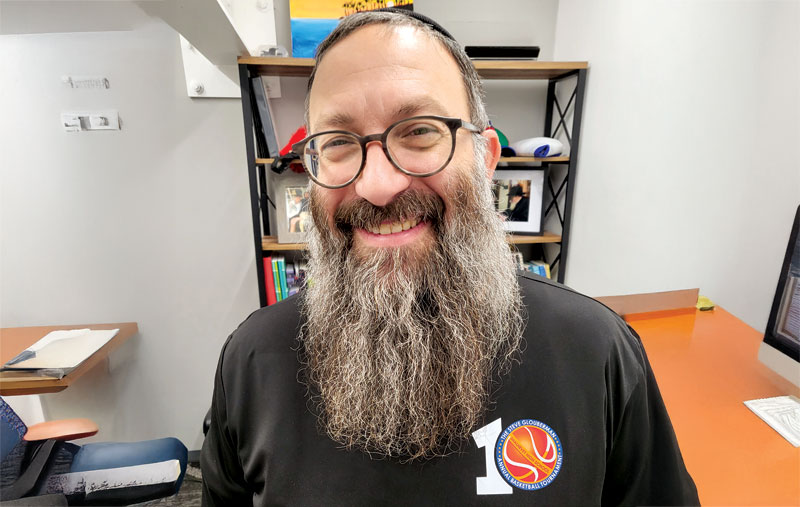
Trying to make choices sometimes can reflect
what quantum physicists ascribe to particles and waves, called weirdness,
the inability of observers to detect
simultaneously position and momentum, the cause of what I label Learedness,
a problem that affected Lear when making
a choice between three daughters, physically comparable to that between weird particles,
whose very observation leads to the mistaking
of their precise position and momentum—-as per Heisenberg’s scientifically uncertain articles.
Einstein, who defined the particles of light,
did not approve of Heisenberg’s suggestion, and Lear also surely realized
that making choices gives no one the right
to feel that what we see as right is right: uncertainty should be most highly prized.
I’d like to add the rabbis to the people who
gave their approval to uncertainty, recording in the Talmud views
considered by them to be wrong, as if they knew
that Heisenberg with his proof of uncertainty provided a principle thought kosher by most Jews.
In “Escape from Shadow Physics’ Review: Quantum Weirdness,” WSJ, 6/14/24, Andrew Crumey, reviewing Escape from Shadow Physics: The Quest to End the Dark Ages of Quantum Theory by Ada Forrest Kay, writes:
In 2005 two French scientists discovered something about oil droplets that had potential implications far beyond the realms of engineering. Yves Couder and Emmanuel Fort of the École Normale Supérieure in Paris were experimenting with a small bath of silicone oil, to which they added further tiny droplets. They wanted to see if they could make the droplets stick to the surface, rather than be absorbed into the fluid. By accident they found that one way to achieve this was to hold the container in their hands rather than fix it to a table. They realized that vibration was the trick—that as a result the droplets would bounce imperceptibly on microscopic surface ripples. Using machinery rather than shaky hands, the physicists made these bouncing droplets move in controlled ways, remaining perfectly intact while riding the waves.
Physicists have wondered whether the same principle applies to light: whether light is, in fact, made of particles, guided by waves. The idea was first suggested in 1927 by Louis de Broglie, a French physicist, and in a different way in 1952 by David Bohm, an American physicist. Known as pilot-wave theory, it was firmly rejected by mainstream quantum physicists such as Niels Bohr and Werner Heisenberg, and by the time Bohm died in 1992 the idea had few followers left.
Couder and Mr. Fort’s discovery changed that, creating intense interest in what came to be called hydrodynamic quantum analogs. In “Escape From Shadow Physics: The Quest to End the Dark Ages of Quantum Theory,” Adam Forrest Kay, a postdoctoral research associate in mathematics at MIT, eloquently explains the history behind hydrodynamic quantum analogs.
In the 19th century, Mr. Kay tells us, light was understood to consist solely of waves, like sound. Red light was low frequency, blue light was high. Then in 1905 Albert Einstein argued that, rather than being a continuous stream, light flowed in discrete bursts of what were effectively particles. All had the same speed, but particles of blue light would have greater momentum than red ones. This was verified in a 1922 experiment, and the particles were called photons.
De Broglie seized the idea and extended it. If light could have both frequency and momentum, then surely anything with momentum should also have a corresponding frequency? Experiments previously used to demonstrate that light was made of waves were now applied to electrons, which indeed showed the wavelike behavior De Broglie predicted.
Now the problem was to reconcile the two apparently contradictory explanations. De Broglie tried to do so with the pilot-wave theory, but lost to Bohr’s principle of complementarity. According to Bohr, the wave and particle interpretations were both valid, but only one or the other could be verified in any particular experiment. The difficulty with this view, Mr. Kay writes, is that “it is a small step from here to the idea that it is our act of looking at the electron that has collapsed its wave nature into its particle nature.” Mr. Kay characterizes Bohr as a charismatic guru “who, by virtue of his nontransferable and unmediated grasp of mantic truth, promises access to a hidden world.” Bohr’s vague principle, enormous prestige and powerful personality opened the door to “quantum weirdness,” Mr. Kay tells us, “the supposedly revolutionary import of modern science with its particles in two places at once, its mind-body connections, its multiverses, its vindication of the Indian sage Nagarjuna, blah blah blah.”
What Mr. Kay wants—and the bouncing droplets seem to promise—is quantum theory without the weirdness. His book is a vigorous defence of “local realism,” the idea that the universe at its smallest level ought to work in much the same way we’re used to seeing it work in ordinary life. Energetically written in short chapters interspersed with digressions into other episodes of scientific wrong turnings, “Escape From Shadow Physics” is consistently interesting, even if it sometimes wanders too far off topic into tales of neglected geniuses and scientific mavericks in other fields.
A crucial component of quantum theory is Heisenberg’s uncertainty principle: Measure the exact location of a particle, and there will be great uncertainty about the particle’s momentum; measure momentum instead, and the particle’s position will be less accurately known. Bohr took this to be an ambiguity of nature itself—there is no real position or momentum prior to measurement, only probabilities of what the result will be. But why? Toss a coin, and you don’t know if it will turn up heads or tails, yet you do know that it must depend on how the coin is tossed, where it lands and so on. Bohr’s opponents—notably Einstein—insisted that the probabilities of quantum theory were like those of a coin toss, governed by as-yet unknown factors termed “hidden variables.”
Conventional wisdom is that these hidden variables cannot exist. Bohr was right, Einstein was wrong, quantum theory is incompatible with local realism and weirdness is inescapable. Yet there is still some debate going on, and Mr. Kay does a good job of unpicking the subtle arguments, showing that there remains room for doubt.
Gershon Hepner is a poet who has written over 25,000 poems on subjects ranging from music to literature, politics to Torah. He grew up in England and moved to Los Angeles in 1976. Using his varied interests and experiences, he has authored dozens of papers in medical and academic journals, and authored “Legal Friction: Law, Narrative, and Identity Politics in Biblical Israel.” He can be reached at gershonhepner@gmail.com.























 More news and opinions than at a Shabbat dinner, right in your inbox.
More news and opinions than at a Shabbat dinner, right in your inbox.